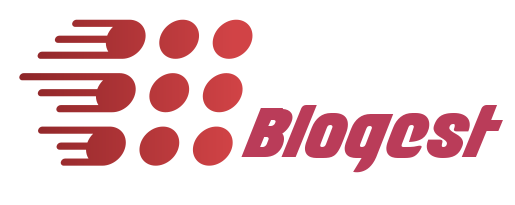Combining DevOps Consulting with Agile Methodologies in Enterprise Application Development
In today’s fast-paced business environment, developing enterprise applications that meet customer expectations and adapt to market demands is crucial. As a technology blogger, I often find myself discussing the importance of streamlining processes and delivering high-quality software quickly. One of the most effective ways to achieve this is by combining DevOps consulting with Agile methodologies in enterprise application development.
Understanding DevOps Consulting and Agile Methodologies
Before we dive into the specifics, let’s start by understanding the two pillars of our discussion.
DevOps consulting focuses on improving collaboration between software development (Dev) and IT operations (Ops) teams. It’s about breaking down the silos that traditionally exist between these groups, enabling a more seamless and integrated approach to software delivery. By implementing DevOps practices, enterprises can automate processes, reduce errors, and ensure that applications are released faster and more reliably.
On the other hand, Agile methodologies are all about flexibility and iterative progress. Agile breaks down the development process into small, manageable pieces, allowing teams to deliver parts of the application in short cycles called sprints. This approach enables quick adjustments based on feedback, ensuring that the final product aligns with customer needs and business objectives.
Why Combine DevOps and Agile in Enterprise Application Development?
Combining DevOps consulting with Agile methodologies in enterprise application development offers a range of benefits that can significantly impact the success of your projects.
1. Faster Time-to-Market
In the competitive world of enterprise applications, getting your product to market quickly can make or break your success. By integrating DevOps with Agile, you can accelerate the development process. DevOps automation tools can streamline the deployment pipeline, while Agile’s iterative approach ensures that new features are quickly tested and refined. This combination allows enterprises to release new applications or updates faster, giving them an edge in the marketplace.
2. Improved Collaboration and Communication
One of the biggest challenges in traditional software development is the lack of communication between teams. DevOps consulting emphasizes collaboration, breaking down the barriers between development and operations. When combined with Agile, which promotes regular team meetings and feedback loops, you create an environment where everyone is on the same page. This leads to better decision-making, fewer misunderstandings, and a more cohesive development process.
3. Enhanced Quality and Reliability
Quality is non-negotiable in enterprise application development. With DevOps, automated testing and continuous integration practices help catch errors early in the development process, reducing the likelihood of bugs making it to production. Agile methodologies further support quality by encouraging regular testing and customer feedback throughout the development cycle. Together, DevOps and Agile create a robust framework for building reliable and high-quality applications.
Key Factors to Consider When Combining DevOps and Agile
While the benefits are clear, successfully combining DevOps consulting with Agile methodologies in enterprise application development requires careful consideration of several factors.
1. Cultural Shift
Implementing DevOps and Agile is not just about adopting new tools or processes; it’s about fostering a cultural shift within your organization. Teams need to embrace a mindset of collaboration, continuous improvement, and shared responsibility. This cultural change can be challenging, especially in larger enterprises with established hierarchies and processes. Leadership must champion this shift, providing the necessary support and resources to ensure its success.
2. Choosing the Right Tools
The tools you choose for DevOps and Agile practices can significantly impact your development process. From version control systems to automated testing tools, the right technology stack can streamline workflows and enhance productivity. It’s essential to select tools that integrate well with each other and support both DevOps and Agile practices. Popular choices include Jenkins for continuous integration, Docker for containerization, and JIRA for Agile project management.
3. Training and Skill Development
To successfully combine DevOps and Agile, your teams need the right skills and knowledge. Investing in training and skill development is crucial. DevOps consultants can play a vital role in upskilling your teams, helping them understand the intricacies of DevOps practices and how they complement Agile methodologies. Additionally, providing ongoing training opportunities ensures that your teams stay updated with the latest trends and technologies.
4. Metrics and Monitoring
One of the key advantages of DevOps is the ability to monitor and measure performance continuously. When combined with Agile, this allows you to track progress in real time, making data-driven decisions that can improve your development process. Key performance indicators (KPIs) such as deployment frequency, lead time, and change failure rate can provide valuable insights into the effectiveness of your DevOps and Agile practices.
Case Studies: Success Stories of Combining DevOps and Agile
To illustrate the impact of combining DevOps consulting with Agile methodologies in enterprise application development, let’s look at a couple of real-world examples.
1. Capital One
Capital One, one of the largest banks in the United States, successfully integrated DevOps and Agile practices to revolutionize its software development process. By adopting DevOps automation tools and Agile workflows, Capital One reduced its application release cycles from months to weeks. This transformation enabled the bank to quickly deliver new features and improvements, staying competitive in the rapidly evolving financial services industry.
2. Etsy
Etsy, a popular online marketplace, faced challenges with slow deployment times and frequent system outages. By embracing DevOps and Agile methodologies, Etsy was able to improve its deployment process, reducing the time it takes to release new code from weeks to minutes. This shift not only improved the platform’s reliability but also allowed Etsy to respond quickly to customer feedback and market changes.
Overcoming Challenges When Implementing DevOps and Agile
While the benefits of combining DevOps consulting with Agile methodologies are significant, it’s essential to be aware of potential challenges and how to overcome them.
1. Resistance to Change
As with any significant organizational shift, there may be resistance to adopting DevOps and Agile practices. This resistance can stem from a fear of the unknown or a reluctance to abandon established processes. To overcome this, it’s crucial to communicate the benefits clearly and involve all stakeholders in the transition process. Providing training and support can also help ease the transition.
2. Integration with Legacy Systems
Many enterprises have legacy systems that were not designed with DevOps or Agile in mind. Integrating these systems with modern DevOps tools and Agile practices can be challenging. However, it’s not impossible. Incremental adoption, where you gradually introduce DevOps and Agile practices while maintaining legacy systems, can help bridge the gap and ensure a smooth transition.
3. Ensuring Security and Compliance
In enterprise application development, security and compliance are top priorities. While DevOps promotes speed and agility, it’s essential to ensure that security is not compromised. DevSecOps, which integrates security practices into the DevOps process, can help address this concern. Additionally, Agile’s iterative approach allows for regular security assessments and compliance checks, ensuring that your applications meet all necessary standards.
Future Trends: The Evolving Landscape of DevOps and Agile
As technology continues to evolve, so do DevOps and Agile practices. Here are a few trends that are shaping the future of enterprise application development.
1. AI and Machine Learning in DevOps
Artificial intelligence (AI) and machine learning (ML) are making their way into DevOps practices, offering new opportunities for automation and optimization. From predictive analytics to intelligent automation, AI and ML can enhance DevOps processes, making them more efficient and effective. As these technologies continue to mature, we can expect to see even more integration with Agile methodologies.
2. DevOps as a Service (DaaS)
The rise of cloud computing has given birth to DevOps as a Service (DaaS), where organizations can leverage cloud-based DevOps tools and services to streamline their development processes. This trend is particularly beneficial for enterprises looking to adopt DevOps and Agile practices without the need for significant upfront investment in infrastructure and tools.
3. Remote Work and Distributed Teams
The shift towards remote work and distributed teams has accelerated the adoption of DevOps and Agile practices. These methodologies are well-suited to remote work, as they emphasize collaboration, communication, and continuous delivery. As more enterprises embrace remote work, we can expect to see a greater emphasis on tools and practices that support distributed DevOps and Agile teams.
Conclusion
Combining DevOps consulting with Agile methodologies in enterprise application development is a powerful strategy for delivering high-quality software quickly and efficiently. By breaking down silos, betterthistechs fostering collaboration, and embracing a culture of continuous improvement, enterprises can stay competitive in a rapidly changing market.
Whether you’re just starting your journey or looking to refine your existing processes, understanding the key factors that impact the success of DevOps and Agile integration is crucial. From cultural shifts and tool selection to training and metrics, each aspect plays a vital role in achieving the full potential of these methodologies.









